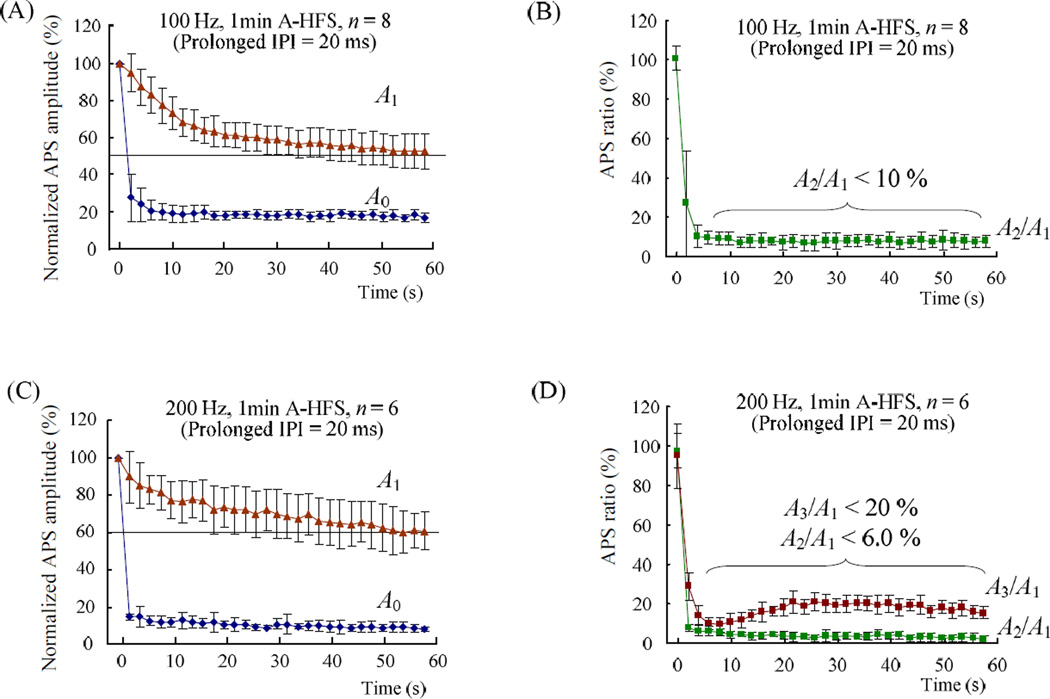Figure 5.
Changes of the refractory period during 100 and 200 Hz A-HFS trains were assessed by inserting shorter gaps of 20 ms (refer Fig 4A for the definition of A0 ~ A3). (A) Normalized amplitudes of the preceding APS (A0) and subsequent APS (A1) to the 20 ms prolonged IPI gaps during 100 Hz A-HFS indicate sufficient recovery of A1 amplitudes. (B) Ratios of A2/A1 during 100 Hz A-HFS indicate that the refractory period produced by A1 extended to enough long to significantly suppress the A2 with ~10 ms delay. (C) Similar to (A), but for 200 Hz HFS. (D) Ratios of A2/A1 and A3/A1 during 200 Hz A-HFS also indicate that the refractory period extended to longer than 10 ms.

